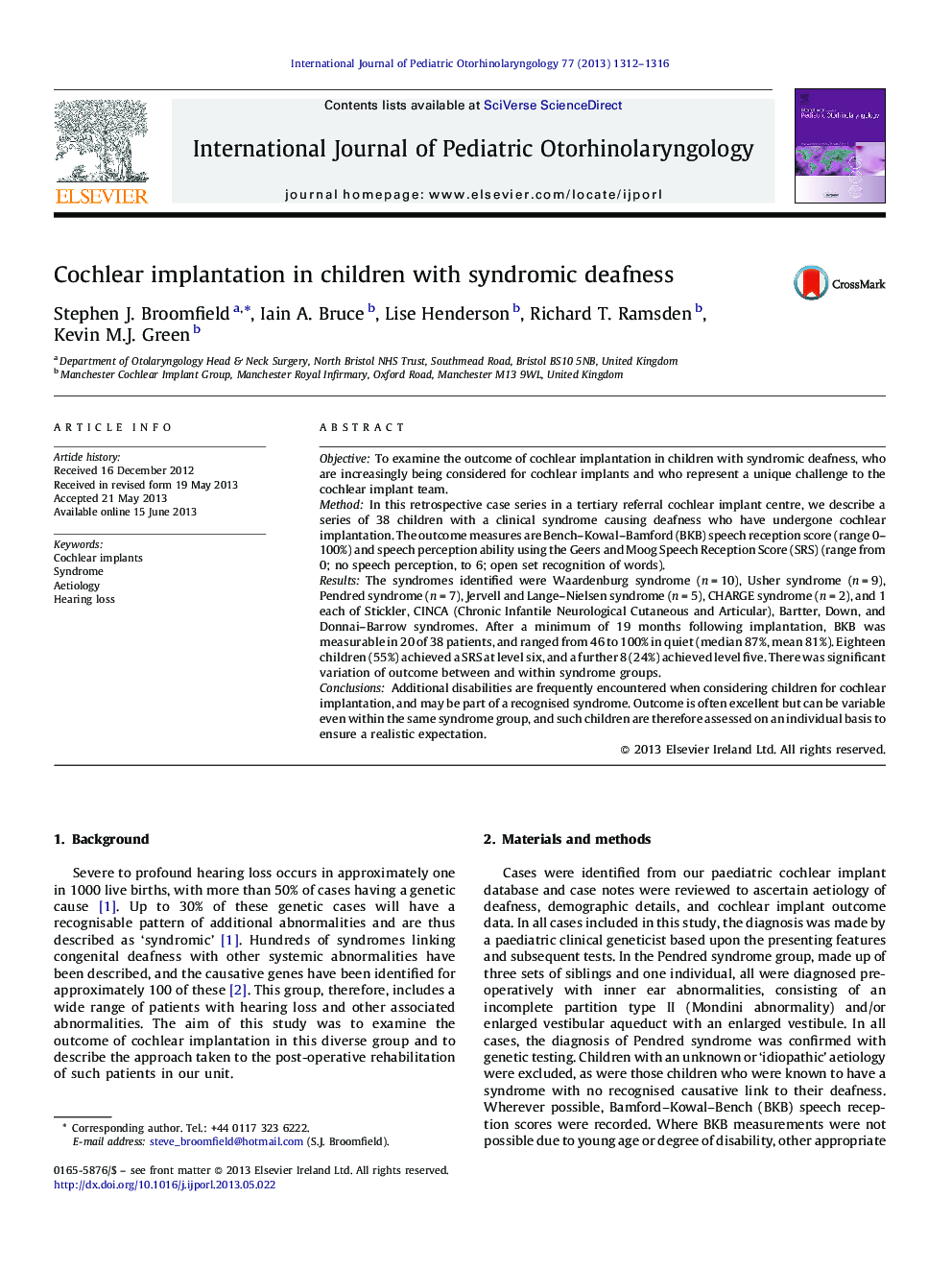| Article ID | Journal | Published Year | Pages | File Type |
|---|---|---|---|---|
| 4113052 | International Journal of Pediatric Otorhinolaryngology | 2013 | 5 Pages |
ObjectiveTo examine the outcome of cochlear implantation in children with syndromic deafness, who are increasingly being considered for cochlear implants and who represent a unique challenge to the cochlear implant team.MethodIn this retrospective case series in a tertiary referral cochlear implant centre, we describe a series of 38 children with a clinical syndrome causing deafness who have undergone cochlear implantation. The outcome measures are Bench–Kowal–Bamford (BKB) speech reception score (range 0–100%) and speech perception ability using the Geers and Moog Speech Reception Score (SRS) (range from 0; no speech perception, to 6; open set recognition of words).ResultsThe syndromes identified were Waardenburg syndrome (n = 10), Usher syndrome (n = 9), Pendred syndrome (n = 7), Jervell and Lange–Nielsen syndrome (n = 5), CHARGE syndrome (n = 2), and 1 each of Stickler, CINCA (Chronic Infantile Neurological Cutaneous and Articular), Bartter, Down, and Donnai–Barrow syndromes. After a minimum of 19 months following implantation, BKB was measurable in 20 of 38 patients, and ranged from 46 to 100% in quiet (median 87%, mean 81%). Eighteen children (55%) achieved a SRS at level six, and a further 8 (24%) achieved level five. There was significant variation of outcome between and within syndrome groups.ConclusionsAdditional disabilities are frequently encountered when considering children for cochlear implantation, and may be part of a recognised syndrome. Outcome is often excellent but can be variable even within the same syndrome group, and such children are therefore assessed on an individual basis to ensure a realistic expectation.
